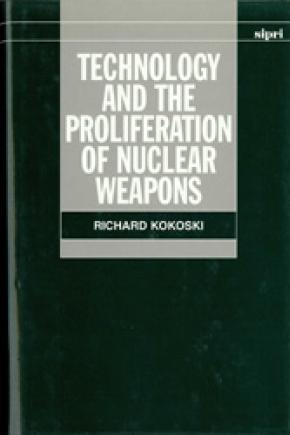Technology and the Proliferation of Nuclear Weapons
Uranium enrichment techniques—including electromagnetic isotope separation, gaseous diffusion, centrifuge, aerodynamic and laser processes—are explained in detail. The technology of plutonium production and extraction is described along with an examination of the problems involved in disposing of the large stockpiles of plutonium now in existence.
The author describes the scope and state of development of the Iraqi nuclear weapon programme, as revealed by the IAEA inspections in the wake of the 1991 Persian Gulf War, and examines the challenges which this experience has posed to the non-proliferation regime. He then outlines and assesses IAEA safeguards and examines moves which could further enhance their effectiveness. His review of recent improvements to nuclear export controls, including those on dual-use items, is accompanied by suggestions for ways to further tighten these controls as well as help to prevent smuggling of fissile material.
Preventing the spread of nuclear weapons clearly requires increased access to information. The information-gathering and verification capabilities which could be of use in the non-proliferation context range from sophisticated image and signals-intelligence satellites to human intelligence. The book concludes with an examination of these capabilities, including the methods involved, their organizational aspects and their implication for furthering nuclear non-proliferation goals.
1. Introduction
2. Uranium enrichment technologies
3. Plutonium production
4. The Iraqi nuclear programme
5. Safeguards: Present and future
6. Export controls: Progress and problems
7. Verification and intelligence
8. Conclusions
Appendix A. The Treaty on the Non-Proliferation of Nuclear Weapons
Appendix B. Implementation of the NPT
Appendix C. International Atomic Energy Agency documents
Appendix D. UN Security Council resolutions relating to Iraq

